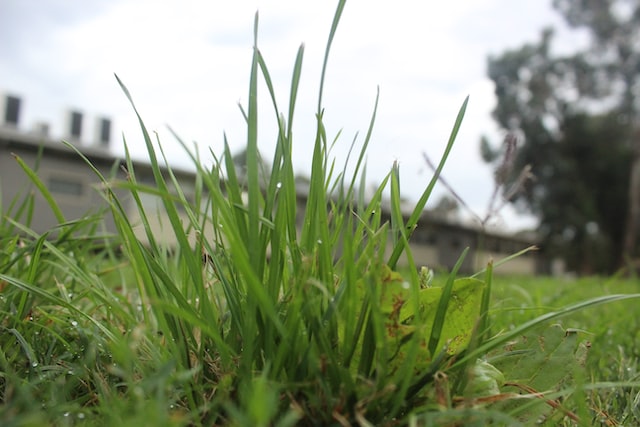How to Mow Your Lawn: A Step by Step Guide

The combination of warmer temperatures and the occasional downpour means your lawn can grow especially fast. Keeping your lawn neat and tidy is one of the most important garden maintenance tasks. Here’s how to mow your lawn so it’s the best feature of your outside space.
Before we get into how to mow your lawn, there are a few things to consider.
What Time Should You Mow Your Lawn?
Believe it or not, there are a few times in the day when conditions are perfect for cutting the grass.
- Mid-morning is great because the early dew has dried up and it’s not yet too hot.
- Early evening is also a good time because it’s starting to cool down but not quite cold enough for dew to form.
But there is more to it than that!
- Spring – We recommend doing your first cut in early spring, and from then mow once per week. Avoid mowing too short as it will weaken it.
- Summer – In summer you should double your mowing on average, dropping to weekly if it is particularly hot. Longer grass copes with warmer weather better, so don’t cut it too short!
- Autumn – Autumn is when grass grows slower, so reducing your cuts to weekly is a good idea. Towards the end, you should perform your last cut.
- Winter – You should only need to mow your lawn if there is significant growth. Leave it on a high-cut setting and never mow the grass if it is wet or frosty.
Have You Got the Right Mower for the Job?
Only got a small lawn? – Don’t use a large mover that’s heavy and awkward to manoeuvre. Choose a push or corded electric mower.
Have a medium-size lawn? – Cordless mowers are a good choice. Opt for a corded mower and you might find the cord doesn’t stretch far enough.
Got a large lawn? – A petrol mower works well. Or if you’ve got an outside space resembling a sports pitch, a ride on mower may be your best bet.
Be sure to keep your mower blades nice and sharp. Blunt blades will only tear up your grass. You can sharpen blades yourself or take it to a lawn mower shop.
How to Mow Your Lawn: A Step By Step Guide
Step 1: Start at the Edges
This frames your lawn quite nicely and it gives you space to manoeuvre your mower as you go up and down your lawn.
Step 2: Mow Your Lawn, Working in Straight Lines
Now you’ve gone around the edge, mow your lawn in straight lines, working from one end to the other. Then turn the mower around and come back the other way. Try to overlap the first set of lines. That way, you won’t be left with any annoying random tufts of grass.
Step 3: Edge Your Lawn
Next up in our guide on how to mow your lawn, it’s time to edge it. If your lawn meets a path, it’s fine to push your lawn move over the edge to trim it. However, if your lawn meets a flower bed, you’ll need to edge it properly. To do this, dig out your shears or a strimmer.
Step 4: Don’t Cut Your Grass Too Short
Many people make this mistake. They think that the shorter they cut the grass, the less often they’ll have to cut it. The problem is, by cutting the grass too short, you’re depriving it of nutrients. Grass stores water and nutrients. Cutting it too short will leave your lawn looking sparse and dead. As a rule of thumb, don’t cut more than a third of your lawn’s length.
Step 5: Mow Your Lawn in Different Directions Every So Often
This is one of those trade secrets of how to mow your lawn for the best result. Mowing your lawn in the same direction every time can create unsightly track lines. Also, if you change your mowing direction, you can make sure you get all of those pesky weeds.
Step 6: Whatever You Do, Don’t Cut Wet Grass
This probably sounds obvious, but don’t try to mow wet grass. Firstly, if you’re using an electric mower, you can get electrocuted. Secondly, wet lawns are slippery and you can fall and hurt yourself, especially if your garden has a slope.
Step 7: Speaking of Slopes, Mow Across Them
If your garden is on a slope, mowing across it means you don’t have to push your mower uphill or risk being dragged downhill. So there you have it, our SIMPLE guide on how to mow your lawn. Follow these tips and you’re sure to have a greener, healthier lawn all through summer and beyond.
For more articles on gardening and gardening storage, you need to improve your outside space, check out the rest of our blog.










